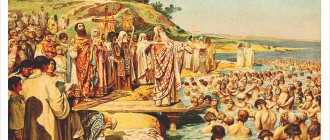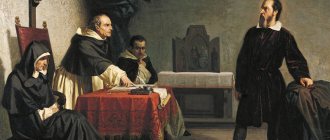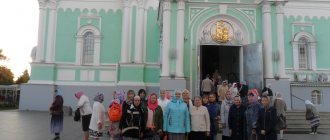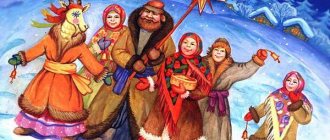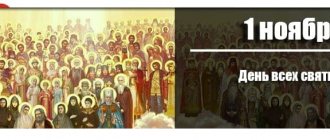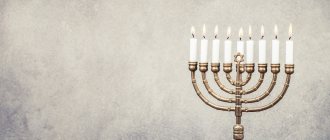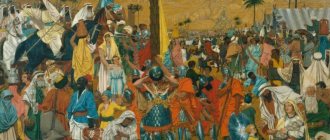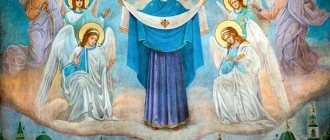Books Important for Orthodoxy
The religion of the Jews is Judaism. What kind of religious books do these people have? First of all, we need to talk about the sacred scripture, which is called the Tanakh. Let's look at its components:
- Torah, or "Pentateuch".
- Naviim, 21 books about the prophets.
- Ketuvim. These are 13 books of various religious genres.
Another very important book for Orthodox Jews is the Talmud. This is a set of laws, as well as moral and ethical standards, which believers must strictly follow.
The essence of Judaism
Judaism is the oldest religion, which is based on the veneration of the One God as opposed to pagan polytheism. The peculiarity is in its strict ethnic character: it arose and developed within one nation. The religion of the Jews received the name “Judaism” from the tribe of Judah. In the 730s BC, the ten tribes of Israel were destroyed as a result of war. As a result, the tribe of Judah remained the only representative of the Jews. Accordingly, the concepts of “Judaism” and “Jews” became identical.
It is important to understand that Judaism is the oldest Abrahamic (common name for Christianity, Judaism and Islam) religion. It received the name “Abrahamic” in memory of God’s Covenant with Abraham. Because Abraham followed God's call and left his lands, he is promised land and numerous descendants. God reveals himself as the one Creator and proclaims His will to people. God gave Abraham ethical regulations, norms and rules of conduct. They formed the basis of three religions: Judaism, Christianity and Islam.
Orthodox Jews at the Western Wall (Jerusalem)
Offshoot: Ultra-Orthodox
It is important to note that there is such a widespread movement today as ultra-Orthodox Jews. In Judaism, this movement bears the well-known name Hasidism. This movement originates in the 18th century. Religion here is closely related to mysticism and exaltation. The main ideas of Hasidim are as follows:
- God is everywhere and always. You need to serve him every minute, in big and small matters.
- We must serve God exclusively in joy.
- Any sin can be expiated.
Daily prayer is very important for Hasidim. It is pronounced in an elevated emotional mood. Its goal is to have as close a relationship with God as possible.
Among the traditional occupations of Hasidim are the construction business (real estate), trade, financial market, and mediation. Quite often Hasidim deal with diamonds. These are quite rich people who rule the world.
Basic dogmatic principles of Judaism
What do Jews profess? Jews believe in one God, which they repeat daily when reading the Shema prayer: “Hear, O Israel. The Lord is our God, the Lord is One.” They also claim that man is created in the image and likeness of God.
The life of Jews is based not so much on doctrinal dogmas as on rules and norms of behavior. The essence of Judaism lies in strict observance of all external and ritual regulations.
A special place in Judaism is given to the assertion that the Jewish people are chosen by God and stand above other people in the world. The Talmud says: “just as man stands high above animals in the world, so Jews stand high above all peoples in the world.”
Jews, on principle, do not spread their creed, believing that Judaism is the national religion of the Jews and is the creed of the chosen people. The covenant was concluded only with the Jews, so there is no need to convert representatives of other nations and faiths.
Jews believe in the coming of the Messiah. At the same time, they do not recognize Jesus Christ as the anointed one of God for the reason that He did not have power and was persecuted. They marked the coming of the Messiah with the arrival of an earthly ruler who would occupy a special political place and conquer all nations for the Jews to rule over them.
A little about God
It is also worth saying that four thousand years ago, Jews also believed in many gods, like other people on Earth. But still, each clan worshiped one, in their opinion, the most powerful deity. And in one community the main thing was Yahweh. It was this cult that gradually came to the fore and occupied a leading position in terms of the number of adherents.
A completely new stage in Judaism is associated with the appearance of such a person as Moses. Scientists are confident that this may actually be a person who once lived, whose main merit was leading the Jews out of Egyptian slavery. It is also important to note that the very first books of the Torah are called the “Pentateuch of Moses,” which once again proves the greatness of this personality in the Jewish religion.
So, the god of the Jews is Yahweh. However, there is another, somewhat transformed name, which is most often used in European countries. This is Jehovah.
Jewish religion - features
The ancient Jews differed significantly in their faith in the One God from the pagan peoples around them. The pagans worshiped various deities and elements (water, fire, earth, sun, moon). The connection between Jews and pagans was considered unacceptable. The attitude of the Jewish chosen people towards representatives of paganism was extremely intolerant.
Thus, the biblical book of Exodus says: “Be careful not to enter into an alliance with the inhabitants of the land into which you will enter, lest they become a snare among you. Destroy their altars, break down their pillars, cut down their sacred groves, [and burn the images of their gods with fire], for you must not worship any god other than the Lord [God], because His name is Jealous; He is a jealous God” (Ex. 34:12-16).
The religion of the Jews is based on the books of the Old Testament - the Tanakh, where a special place is occupied by the Pentateuch of Moses - the Torah. Jews also claim that along with the written text, Moses, in communicating with God, received the Oral Torah (Mishna), which was passed on for a long time from mouth to mouth.
In the 3rd century, explanations were written for the Written Torah based on the Mishnah. This multi-volume book was called the Talmud. It contains all the rules and laws that all Jews must strictly adhere to. This includes not only religious treatises, but also ethics, morality, and laws. According to Jewish law, only Jews have the right to read and interpret the Talmud.
The external symbol of Judaism is the Menorah, the seven-branched candlestick mentioned in the Bible. It was in the Tabernacle and in the Jerusalem Temple until its destruction. It symbolizes God leaning on the Tree of Life.
Since the 19th century, the Jewish religion received the symbol of the Six-pointed Star, it is also called the Star of David.
In the design of synagogues, images of the Tablets of the Covenant are actively used; in Hebrew they are called “luchot ha-brit”. These are two stone slabs on which the 10 Commandments are written.
Appearance
Orthodox Jews believe that they must strictly follow not only the sacred scripture - the Torah, but also many of the rituals of their ancestors who lived during the heyday of Judaism in the Polish-Lithuanian Commonwealth in the 14th-17th centuries. That is why the appearance of these people is often very strange, according to the opinion of modern people.
Adherents of this particular movement in Judaism wear clothes exclusively in two colors - white and black (this also applies to underwear). In this case, you must have a hat on your head. On holidays, Orthodox Christians wear fur hats, which come in two types:
- Spadaks. Made from beaver fur, tall. Definitely black.
- Shtreimly. Flat hats made of sable fur.
Their caftans have different variations. They can be of different lengths. The color can be either simply black or white striped (such clothes are worn mainly on holidays along with a special white hat with a pompom).
What other clothes do Orthodox Jews wear? So, there is one very interesting secondary religious sign of such people - these are the tassels that stick out from under their clothes. They are the obligatory attribute of tales (special material that can either cover the entire human body during prayer or be part of underwear). The main purpose of these brushes is prescribed in the Torah. Looking out from under the clothes, they should remind us of God and the fact that we must serve him every minute.
Unique Jewish traditions
Jewish funerals took place in compliance with rather complex rituals. All household utensils and furniture were removed from the deceased’s home, and relatives tore their clothes. Neighbors had to empty out all their water supplies. In modern Judaism, the ceremony has been simplified and prayers are read over the deceased. It is not customary to bring flowers to a grave; according to custom, a pebble is placed on it.
At the end of autumn or beginning of winter, the holiday of Hanukkah is celebrated in memory of the miracle that happened in the Temple. When the Greeks destroyed and desecrated it, the Jews were able to find only one vessel with pure oil for the lamp. Its contents would only last for one day of burning. But a miracle happened: the lamp burned for eight days. In memory of this event, lamps are lit on the windows of houses at dusk. Moreover, one light is added every day until the number reaches 8. At this time there is no fasting and they do not mourn the dead.
Hairstyle
Orthodox Jews also have a special hairstyle. And to be more precise - with curls that either hang down to the shoulders or are laid behind the ears. They are called sidelocks. Not all representatives of Judaism wear such hairstyles, but only those who are zealous about the following commandment of the Torah: “Do not round the edges of your hair and do not trim your beard...”
It is worth noting that there are a huge number of interpretations of this commandment. However, Orthodox Jews take it as literally as possible. Which leads to the appearance of sidelocks and long beards.
Nutrition
The entire life of Orthodox Jews is guided by the scriptures of the Torah. The same applies to nutritional rules. What can such people eat and what can’t they eat?
- Kosher, i.e. The meat of ruminant artiodactyls, as well as mammals, is considered permitted. Orthodox Jews may consume meat from sheep, cows, bison, elk, etc.
- Such people should not eat the meat of rabbits, hares, pigs, and horses.
- Kosher bird species: chicken, duck, goose, pigeon, quail.
- The Torah prohibits the consumption of animal blood in any form. To get rid of it, there are two procedures: salting and frying.
- Also, Orthodox Jews have a strict ban on mixing dairy and meat foods. After eating meat, you must wait at least 6 hours, and only then eat dairy products.
- You can also eat fish, but not all fish, but those that have fins and scales.
- Eggs from kosher birds are kosher.
A few words about women
What are they like, Orthodox Jewish women? Initially, it must be said that after marriage, such ladies cut their hair as short as possible or even shave their heads bald. This tradition dates back to the Middle Ages, when in this way women protected themselves from the encroachments of men. But even today it has not lost its relevance among the orthodox.
Married ladies should also be faithful to their husbands. After all, among the Orthodox, a child born not from a husband is a terrible sin, a stain on the family. Then he will not be able to live normally: study, get married or get married. If the baby is born to an unmarried girl, he will be an ordinary Jew.
Regarding the role of women, the orthodox adhere to old-fashioned rules. So, the wife’s area of activity is family, home, children, comfort. Everything else is for men. However, a woman in this religion was never the property of her husband. She has a wide range of rights and freedoms. In a certain sense, a woman is even revered and worshiped. However, only within the walls of your home.
It should also be noted that Orthodox Jews are not around women in public places: buses, hairdressers, etc. In addition, they try not to walk on the same side of the street.
Judaism in Russia is one of the traditional religions
In Russia today, Judaism is one of the traditional religions of the Russian Federation. The Federal Law on Freedom of Conscience and on Religious Associations lists Judaism among the religions that form an integral part of the historical heritage of the peoples of Russia.
The Jewish religion on the future Russian territory is known from information from the Bosporan kingdom. It included the Taman Peninsula. In addition, the Khazar Khaganate, a neighboring state of Kievan Rus, professed Judaism in the Middle Ages.
President of the Russian Federation Vladimir Putin with leaders of the Russian Jewish community. Judaism in Russia is a traditional religion. Photo: golosa.info
Judaism considers everyone who accepts this faith to be part of the Jewish people. Currently in Russia there are several ethno-religious subgroups of Jews:
- Ashkenazi Jews who speak Yiddish. They make up more than 95% of the Jews of Russia;
- Mountain Jews speak dialects of the Tat language;
- Georgian Jews - until recently their native language was the Georgian ethnolect;
- Bukharian Jews - until recently spoke a dialect of Tajik (or Farsi).
There are 2 chief rabbis in Russia: Berl Lazar (from FEOR) and Adolf Shaevich from KEROOR.
Mountain, Georgian and Bukharan Jews each have one religious community in Russia, with all 3 located in Moscow.
Ashkenazi Jews have more than 180 communities in FEOR alone - the Federation of Jewish Communities of Russia, and about 100 in KEROOR - the Congress of Jewish Religious Organizations and Associations in Russia.
Karaites and Krymchaks do not have religious organizations on the territory of Russia
Berl Lazar, Shlomo Dov-Ber Pinchos Lazar. Chief Rabbi of Russia. Photo: upload.wikimedia.org
Today in Russia there are legally several all-Russian networks of religious organizations of Judaism: FEOR, KEROOR, OROSIR and others. Thus, Russia has 2 chief rabbis: Berl Lazar (from FEOR), Adolf Shaevich from KEROOR.
The largest network of organizations is FEOR. The chairman of a Jewish religious community and a rabbi are not the same thing. There are at least 46 rabbis of the FEOR in Russia (according to the Lechaim magazine, published by the FEOR).
FEOR and KEROOR basically follow the rules of Judaism, which dictate that only a halakhic Jew, that is, either a Jew either entirely or by mother, can become both a rabbi and the chairman of a community; and a Jew on his father's side has no right to occupy this position.
By leaving a comment, you accept the user agreement
Traditions and rituals
What customs do Orthodox Jews observe? What interesting things do their beliefs entail?
- First of all, we need to talk about circumcision. Thus, this procedure involves circumcision of the foreskin of the male genital organ of an infant (on the eighth day from birth). It is believed that this is a kind of covenant between the people of Israel and God.
- Orthodox Jews must wear a kippah (cap) throughout the day. This is a special sign of respect for God.
- Before reading the morning prayer, representatives of the Orthodox movement must put on a tallit (veil).
- Kapparot is a tradition of atonement for one's sins. It is performed on the eve of Yom Kippur. A man or woman should take a live rooster in his hands and twirl it around his head, saying: “Let this be my atonement.”
Simple conclusions
The God of the Jews, Yahweh, told his disciples that they needed to know and honor the Torah. This is exactly what the followers of this movement do. For the most part, they learn. Men go to work only in adulthood. In their youth and the first couple of years of marriage, such men devote all their time to studying. That is why this trend is not too favored by Jews. After all, taxpayers’ money goes to support such families (where often men, and women, of course, do not work). And the Orthodox, in turn, are confident that other Jews do not adhere to the sacred laws of the Torah.
